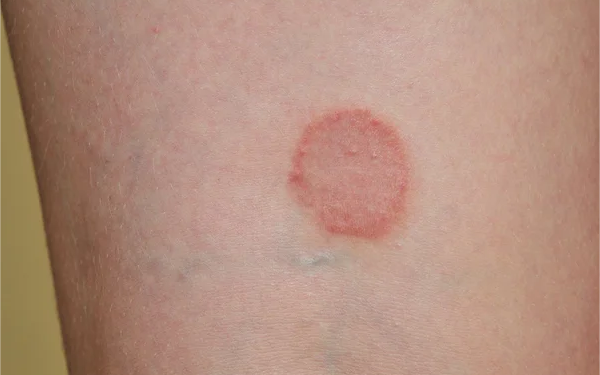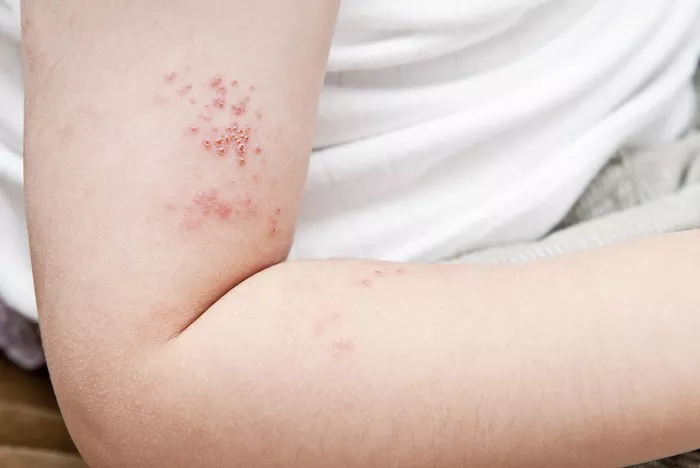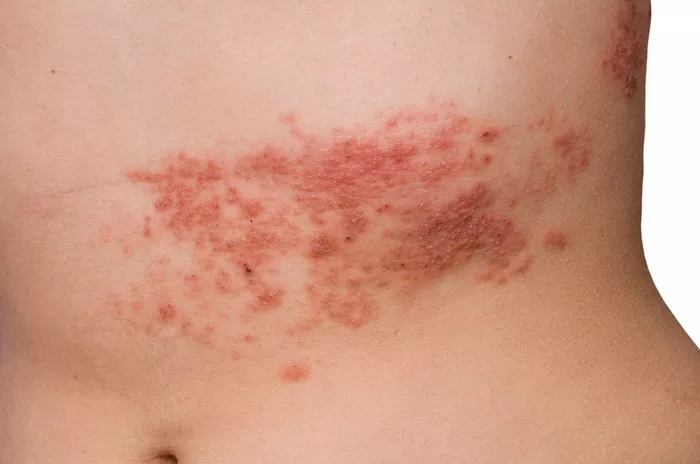Ringworm is a common fungal infection that affects the skin. Despite its name, ringworm is not caused by a worm. Instead, it is caused by a group of fungi called dermatophytes. These fungi thrive in warm, moist environments and can infect different parts of the body. The name “ringworm” comes from the characteristic ring-shaped rash that appears on the skin. Understanding where and how you can get ringworm is important in preventing and treating it.
What Is Ringworm?
Ringworm, also known as tinea, is a skin infection caused by fungi that live on the skin, hair, and nails. The infection can occur anywhere on the body, but it is most commonly seen on the scalp, feet, groin, and nails. Ringworm typically appears as a red, itchy rash with a ring-like shape and clear skin in the middle.
Common Causes of Ringworm
Ringworm is contagious and can spread easily from person to person. The primary cause of ringworm is exposure to fungal spores that can live on surfaces, fabrics, and other materials. These fungi thrive in certain environments and can cause an infection when they come in contact with your skin. There are several ways that you can get ringworm, which we will explore in detail.
1. Human-to-Human Transmission
The most common way to get ringworm is through direct skin-to-skin contact with an infected person. If someone has ringworm, the infection can be passed on to you if you touch their rash or the area of skin affected by the fungus. This type of transmission is most likely to happen in places where people are in close contact, such as:
- Sports activities, particularly contact sports like wrestling
- Sharing clothes or towels
- Hugging or other forms of close physical contact
If you come into contact with someone who has ringworm, it’s important to wash your hands and skin immediately with soap and water to reduce the risk of infection.
2. Animal-to-Human Transmission
Ringworm can also be transmitted from animals to humans. Certain animals, especially pets like cats and dogs, can carry the fungus that causes ringworm. The infection is most commonly seen in pets like cats, dogs, and livestock, such as cows and horses.
Animals that have ringworm may show signs like hair loss, scaly patches, or red, irritated skin. If you handle an infected animal, you could pick up the fungal spores from their fur or skin. Common ways to get ringworm from animals include:
- Petting or handling infected animals
- Cleaning up after an infected pet
- Coming into contact with the pet’s bedding, grooming tools, or toys
It’s important to check pets regularly for signs of ringworm and to seek treatment if necessary. You should also wash your hands thoroughly after handling animals to reduce the risk of infection.
3. Contaminated Surfaces and Objects
Fungi that cause ringworm can survive on surfaces for extended periods, which makes it easy to pick up the infection from contaminated objects. These fungi are resilient and can live on a variety of surfaces, including:
- Gym equipment
- Public showers and swimming pools
- Bedding and towels
- Clothing, particularly hats, and shoes
- Furniture or carpets in shared living spaces
If you use public facilities like gyms, locker rooms, or swimming pools, you are at an increased risk of exposure to the fungi that cause ringworm. The fungi can survive on floors, benches, and other surfaces, especially in areas that are warm and humid.
To reduce the risk of picking up ringworm from surfaces, it’s important to take precautions, such as:
- Wearing flip-flops or shower shoes in public showers or locker rooms
- Using a clean towel to wipe down gym equipment before and after use
- Avoiding sitting on public furniture without a cover or towel
- Washing your clothes and bedding regularly to remove fungal spores
4. Soil and Environmental Exposure
In some cases, you can get ringworm from direct contact with contaminated soil. This is more common in people who work with soil or have close contact with it, such as farmers, gardeners, or landscapers. The fungus that causes ringworm can live in the soil for long periods, and you may pick it up if you handle the soil without protective clothing or gloves.
While this is less common than other forms of transmission, it is still a risk, particularly if you are working in an area where the soil is known to be contaminated with dermatophytes.
5. Poor Hygiene and Weak Immune System
While ringworm is highly contagious, some people are more likely to get infected due to certain factors. Poor hygiene and a weakened immune system can increase your risk of developing ringworm. For example:
- Not bathing regularly or washing clothes frequently
- Wearing sweaty clothes or shoes that are not changed or washed
- Having a weakened immune system due to conditions like diabetes, HIV/AIDS, or medications that suppress the immune system
If you have a compromised immune system, your body may have a harder time fighting off infections, making you more susceptible to fungal infections like ringworm. People with chronic health conditions should take extra precautions to avoid exposure to ringworm and other fungal infections.
6. Sharing Personal Items
Ringworm can be spread through the sharing of personal items, especially those that come into contact with your skin. Items like combs, brushes, hats, towels, and shoes are common sources of fungal transmission. When you share these items with someone who has ringworm, you risk transferring the fungal spores to yourself.
To avoid spreading or contracting ringworm, it’s important to avoid sharing personal items with others. Always use your own towel, comb, or brush, and don’t borrow someone else’s shoes or clothes.
Risk Factors That Increase Your Chances of Getting Ringworm
There are certain factors that can increase your chances of getting ringworm. Understanding these risk factors can help you take preventive measures to protect yourself. Some common risk factors include:
Sweating: Excessive sweating creates a warm, moist environment on the skin, which is ideal for the growth of fungi. Wearing tight or non-breathable clothing, especially during exercise, can increase your risk of developing ringworm.
Living in Crowded Conditions: People who live in crowded conditions, such as dormitories, military barracks, or shelters, are at a higher risk of ringworm due to the close contact between individuals and shared living spaces.
Having Skin Conditions: If you have cuts, abrasions, or other skin conditions, the skin’s natural barrier is weakened, making it easier for the fungi to infect your skin.
Using Steroids: Long-term use of corticosteroids or other immune-suppressing medications can weaken the immune system, making it harder for your body to fight off infections like ringworm.
How to Prevent Getting Ringworm
Preventing ringworm involves taking simple steps to protect yourself from the fungi that cause the infection. Here are some practical tips to help you avoid getting ringworm:
Practice good hygiene: Wash your hands frequently, especially after touching animals or handling potentially contaminated items. Bathe regularly, and keep your skin clean and dry.
Avoid sharing personal items: Don’t share towels, combs, brushes, hats, or shoes with others.
Keep your living space clean: Regularly wash your bedding, towels, and clothes in hot water to remove any fungal spores that may be present.
Wear protective gear: If you’re in environments like public gyms, swimming pools, or locker rooms, wear protective footwear and consider using a towel or mat on public furniture.
Treat pets promptly: If your pet shows signs of ringworm, take them to the vet for treatment to prevent the spread of the infection to humans.
Conclusion
Ringworm is a highly contagious fungal infection that can be spread through direct contact with an infected person, animal, or contaminated surfaces. It can occur in a variety of environments, including homes, gyms, and public facilities. By understanding where and how you can get ringworm, you can take preventive measures to reduce the risk of infection. Practicing good hygiene, avoiding shared personal items, and protecting your skin in public spaces are essential steps in keeping ringworm at bay. If you do get infected, prompt treatment with antifungal medications can help clear the infection and prevent it from spreading.
Related topics:


























